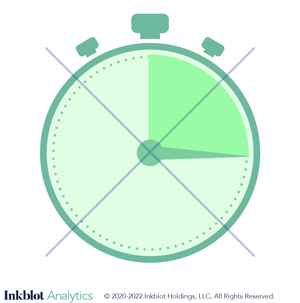Developments on the Inkblot Test: Scoring
After Hermann Rorschach’s sudden death in 1922, his inkblot test began to take on a life of its own as it traveled around the world.
So what’s wrong with projective tests? Here are some of the top critiques.
Projective tests are frequently met with apprehension, doubt, and rejection. And yet, projective tests proliferate in medicine, scientific research, and pop-culture. Luis A. Cordón, a scholar on the history of psychology, identified this as an apparent paradox in the realm of projection. Despite a lack of favorable evidence, the tests are still popular and widespread globally—aka the “projective paradox” (Cordón, 2005, p. 201).
So what’s wrong with projective tests? Here are some of the top critiques.

If you were a teacher and had to grade a batch of papers, would you prefer to grade multiple-choice tests with pre-determined answer keys or free-response essays? Should time and energy be the key factors, you’d probably go for the multiple-choice test. While the multiple-choice test might be easier on the person doing the grading, it provides a less-flexible medium for the student to express their knowledge. The essay approach allows for wiggle room and enables idiosyncrasies to surface in the application of knowledge. Each test has its advantages for certain types of knowledge. In the study of personality, different types of tests allow for more structured responses—like the multiple-choice test—while others—like projective tests—allow for more unstructured responses. Projective tests take a long time to administer and score because they allow people to have freedom of response. The Rorschach Inkblot Test asks participants to describe what they see in a series of 10 inkblot cards. The psychologist must record the participant’s responses and also do a follow up inquiry for each card. Finally, the psychologist scores and interprets the results, which can take up to two hours depending on the amount of the responses and their complexity (Lilienfeld et. al., 2000). Projective tests are not the kind of test where you answer a series of true-false questions. Its complexity allows for greater detail to emerge, but at the cost of labor.

An intensive administration and scoring process might seem like an issue with just one participant, however at scale it’s compounded into an exponential issue of time and resources. The Thematic Apperception Test (TAT)—a projective test invented by Harvard psychologists in the 1930s—asks participants to tell or write stories about the pictures they see. In its original form, the test consisted of 20 cards (Murray, 1951). If the average person took five minutes on each card, there would be 100 minutes of content for the researcher to record and analyze. When applied to a mere group of 10 participants, the researcher now faces over 16 hours of content to analyze and then organize into each individual’s report. The researcher has to study patterns, motifs, and certain narratives that indicate a person’s attitudes and personality. That’s more than a full-time job, it’s overtime. Projective tests can produce an incredible amount of data. Without a proper team or the technology to process data, projective tests can appear to be unscalable. Historically, there was a point in time where the United States failed at scaling a projective test. During the second World War, the Rorschach Inkblot Test was modified into a multiple choice test to be used for screening military personnel. However, the test was ultimately deemed unfit for military use as otherwise mentally fit candidates would “fail” (i.e., score past a certain threshold indicative of psychological distance) screening (Springer, 1946).

Throughout its history, projective testing has faced growing pains as psychologists and researchers used their own methods for administering and scoring the tests. For example, the cards of the Thematic Apperception Test (TAT) have been reportedly used by psychologists selectively instead of in a standardized way (Lilienfeld et. al., 2001). Many psychologists became concerned about usage of projective tests. One psychologist wrote, “When a single projective technique is used without the validating tools of measurement and case history, and without methodological responsibility, it becomes a charlatan’s tool. There are no get-rich-quick schemes in the field of personality research” (Macfarlane, 1942, p. 410). It is worth noting that during this period of time, projective tests were being used in advertising to great success. Ernest Dichter—an Austrian psychologist turned adman—had already revolutionized advertising through his use of qualitative (and often projective) interviewing methods (Horowitz, 1986). As projective tests passed through the hands of advertisers, doctors, and researchers alike, they were tweaked to fit a certain situation. By the 1960s, projective tests like the Rorschach came under scrutiny for missing “standardized procedures and a set of norms (averaged results from the general population)” (Lilienfeld et. al., 2001, p. 42). To critics, projective tests have unreliable methods for determining what was a normal response and what was not.

Perhaps the most common criticism against projective testing is that it lacks objectivity. Projective tests without standardized scoring rely on the psychologist’s interpretation of the data. For example, participant stories from the Thematic Apperception Test (TAT) are often intuitively interpreted by psychologists (Lilienfeld et. al., 2001).When psychologists make decisions based on intuition, they run the risk of projecting their own feelings and ideas onto the data and the participant, which can lead to mixed results. Critics pointed out that psychologists come to different conclusions when using the same projective test (Wood et. al., 1996). While some clinicians and researchers value its flexibility, a lack of standardization and scoring mean that projective tests are subjectively interpreted by the psychologist. The risks of interpreter bias can lead to errors in analysis.

Psychologists that are interested in studying individual complexities will more often use projective tests. In qualitative research the main focus (instead of numbers) is describing attitudes, concepts, interpretations, metaphors, and symbols of humanity. Much of this qualitative information is not readily available in objective testing. Psychologists that are interested in these personality descriptors utilize projective tests to assess varieties of qualitative data, ranging from interpretations of inkblots and the creation of stories, to the drawing of human figures. The participant gives their individual interpretation of the projective test material, which can result in a seemingly unlimited number of unique responses, allowing rich detail and content to emerge. Some critics have gone as far to label projectives as methods instead of tests because it focuses too much on content responses (Viglione and Rivera, 2003). They argue that because projective tests rely on a qualitative heavy approach, they often have insufficient psychometric properties. On the other hand, those same critics tout objective testing because it is able to establish psychometric foundations based on quantitative research. The dichotomy between number heavy or content central approaches is an essential motif (if not a rift) in the literature of psychology, separating researchers into camps of quantatatives or qualitatives Viglione and Rivera, 2003). Though some researchers prefer a balance of both methods.

Projective tests are used to describe personality and psychopathology (Viglione and Rivera, 2003). Psychologists use projective tests to gather information on the functionality or the structure of personality. The results can tell you about the way a personality functions—how someone adapts to stress—or the way a personality is structured—whether or not a person is generally open to new experiences. Neuropsychologists use projective tests to develop rapport with people and gather data on their personality and psychological well being (Hunter and Geske, 2018). However some critics worry that the excessive responses to the material in projective tests are associated with the overestimation of pathology (Viglione and Rivera, 2003). In other words, there is a chance that psychologists can go digging for psychological issues—using projective tests as probes—and find problems that weren’t there to begin with.
Projective tests have a history of being mired in criticism. However, that does not mean that projectives should be relegated to the role of an outdated practice. In fact, an intensive review might persuade anyone with a polarized view on projective tests to reconsider their position.
References
Cordón, Luis A. (2005). Popular psychology: an encyclopedia. Westport, Conn: Greenwood Press. 201–204.
Horowitz, D. (1986). THE BIRTH OF A SALESMAN: ERNEST DICHTER AND THE OBJECTS OF DESIRE. f Pam 2011.039, Published Collections Department, Hagley Museum and Library. p. 1-79.
Hunter E.E., Geske S.J. (2018) Projective Tests. In: Kreutzer J.S., DeLuca J., Caplan B. (eds) Encyclopedia of Clinical Neuropsychology. Springer, Cham.
Lilienfeld, S. O., Wood, J. M., & Garb, H. N. (2000). The Scientific Status of Projective Techniques. Psychological Science in the Public Interest, 1(2), 27–66.
Lilienfeld, S.O., Wood, J.M., & Garb, H.N. (2001). What's wrong with this picture? Scientific American, 284 5, 80-7 .
Macfarlane, J. W. (1942). Problems of validation inherent in projective methods. American Journal of Orthopsychiatry, 12(3), 405–410.
Murray, H. A. (1951). Uses of the Thematic Apperception Test. The American Journal of Psychiatry, 107, 577–581.
Springer, N. (1946). The Validity of the Multiple Choice Group Rorschach test in the Screening of Naval Personnel, The Journal of General Psychology, 35:1, 27-32.
Wood, J. M., Nezworski, M. T., & Stejskal, W. J. (1996). The Comprehensive System for the Rorschach: A Critical Examination. Psychological Science, 7(1), 3–10.
Viglione, D., Rivera, B. (2003). Assessing Personality and Psychopathology With Projective Methods.
After Hermann Rorschach’s sudden death in 1922, his inkblot test began to take on a life of its own as it traveled around the world.
Recently the Rorschach test has seen another revival in media headlines.
As the inkblot test grew and developed, variations of the core idea formed.
Be the first to know about new psychological insights that can help you optimize customer touchpoints and drive business growth.